Thursday October-16 2025 11:49:58
Agricultural soil testing sieve is a tool used in agricultural production and research to process and analyze soil samples. It uses a variety of mesh sizes ranging from 0.074mm to 60mm to separate particles, helping users or agricultural engineers understand soil composition and physical properties. Made of high-strength stainless steel mesh and a durable metal frame, the sieve is tightly connected to the frame, making it resistant to deformation and clogging. The overall design is easy to operate and clean, and it can be used with a variety of vibrating equipment.
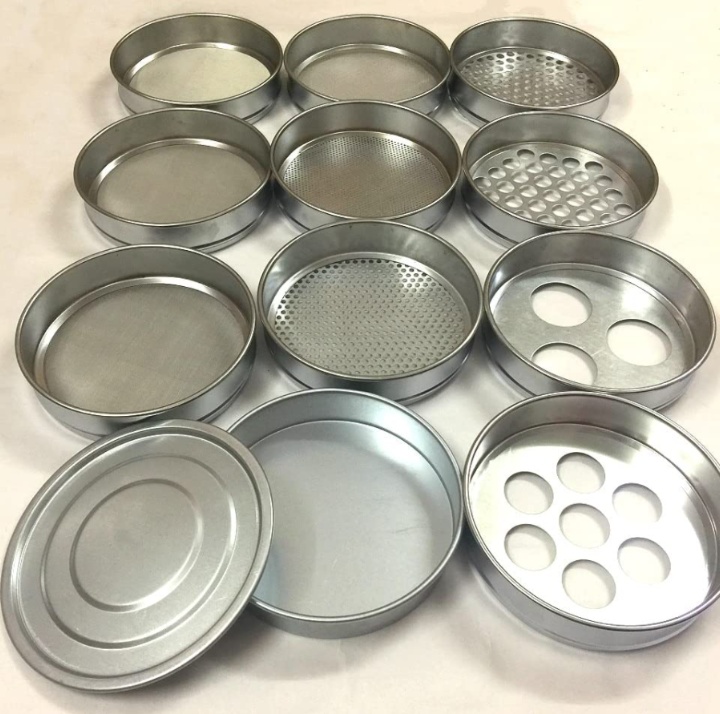
Agricultural soil testing sieves are primarily used to separate soil samples into particles of varying sizes. Testing sieves come in various types depending on their construction and purpose. Metal mesh sieves have mesh sizes ranging from a few millimeters to tens of microns, covering a wide range of particle sizes from coarse sand to fine powder. To accommodate varying sample sizes and testing requirements, sieves are available in full-height and half-height sizes. Furthermore, for clayey soils containing a large number of fine particles, specialized wet sieves are available to prevent particles from clumping and ensure accurate analysis.

In the screening process of agricultural soil testing sieves, soil sieve diameters cover common sizes such as 3'', 6'', 8'', 10'', 12'', 200mm, and 300mm. The mesh range is 5--500 mesh, corresponding to an aperture/opening of 10--200µm. The frame material of the soil sieve can be selected from brass, stainless steel, galvanized materials, etc.the following is a detailed introduction to common types:
Metal Mesh Sieves
Soil testing sieves consist of a woven wire mesh and a metal frame. The mesh is made of stainless steel or brass. Stainless steel is corrosion-resistant and durable, making it the preferred choice for laboratory testing. Brass is less expensive but may corrode in humid environments. Mesh sizes range from a few millimeters to tens of microns. Soil particle size analysis typically requires a set of metal mesh sieves with varying mesh sizes, stacked in descending order to separate particles of varying sizes.
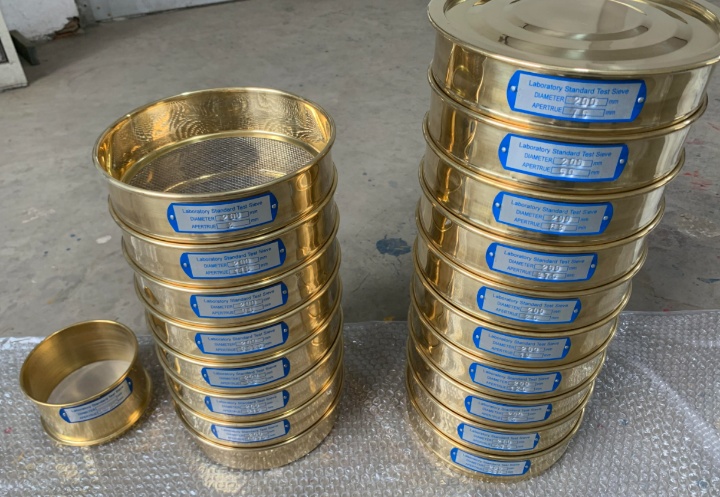
Full-height sieve
The main feature of a full-height sieve is its deeper sieve frame. It is suitable for testing that requires processing large batches of soil samples. The deeper sieve frame can accommodate more sample and provides a larger screening area, thereby improving screening efficiency. It is often used in construction projects, geological surveys, and large-scale agricultural soil analysis to quickly process large numbers of samples.
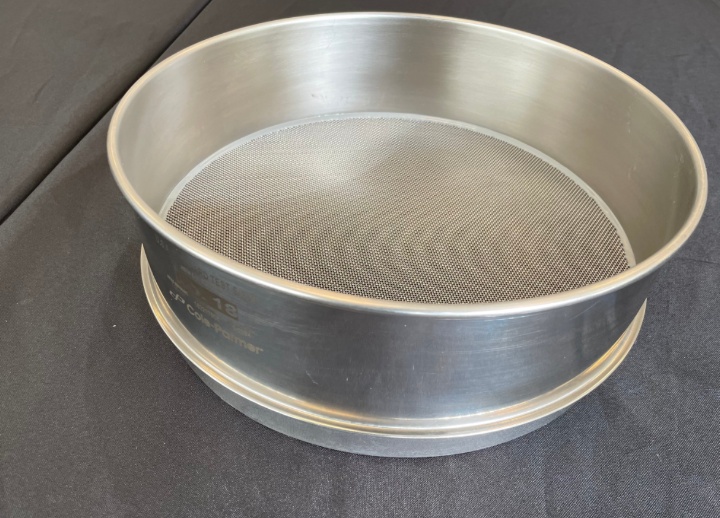
Half-height sieve
The half-height sieve has a sieve frame depth that is half or less than that of a full-height sieve. It is suitable for testing small batches or delicate soil samples. Due to its small size, it can be more easily stacked in multiple layers on a vibrating screen, allowing for separation of a wider range of sample sizes in a single test. It is often used for laboratory research, fine particle size analysis, or testing when the number of samples is limited.
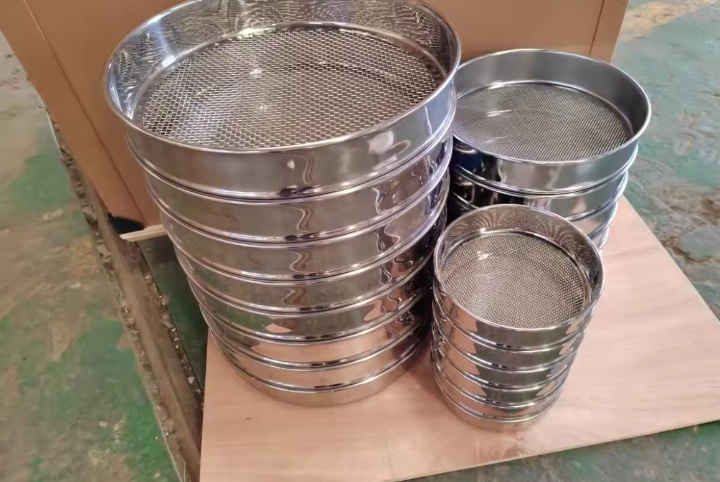
Wet Sieving
A wet sieve is a special type of sieve used for wet sieve analysis. It is particularly suitable for separating soils containing large amounts of fine particles, such as silt and clay. During the wet sieving process, the soil sample is passed through the sieve with the aid of a stream of water, which washes away particles smaller than the sieve openings. This helps prevent fine particles from clumping or sticking to the sieve during dry sieving, thereby improving analytical accuracy. Wet sieves are often designed with a special structure that allows for connection to a water line for easy flushing. This method is crucial for accurately determining the clay and silt content of soil.
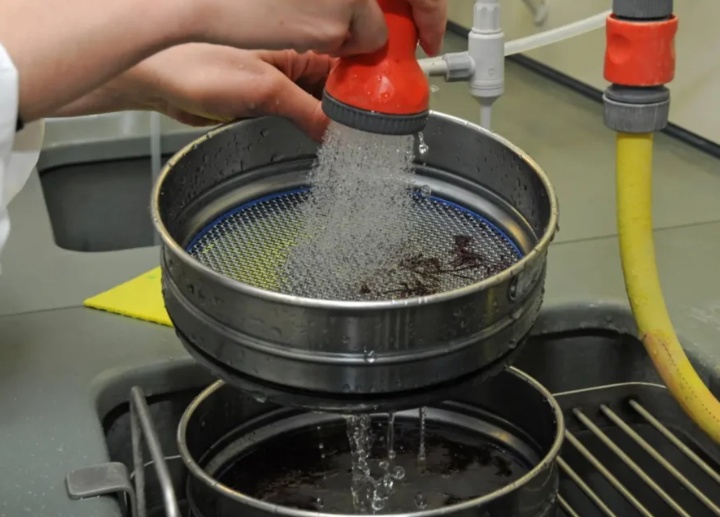
| Testing Sieve Specification | ||
| Sieve Material | Brass, AISI304/316/316L,galvanized,etc. | |
| Technology | Woven | |
| Standard | ASTM E11-09 ISO3310-1 | |
| Sieve Diameter | 3" 6" 8" 10" 12" 200mm 300mm | |
| Frame | Material | Brass , stainless steel ,etc. |
| Height (full) | 1-3/4'' -- 2-5/8'' | |
| Aperture shape | Square | |
| Mesh opening / Aperture | 5--500mesh 10--200μm | |
Choosing the right agricultural soil testing sieve should be determined based on experimental accuracy and application scenarios. For precise laboratory analysis, consider soil sieve sets that meet ASTM standards. These typically feature wire mesh sieves of varying mesh sizes and are suitable for soil grading, screening, analysis, and filtration. These sieves are often constructed of seamless brass or stainless steel frames, with rolled edges and extended skirts for easy stacking. Agricultural engineers often use them for their accuracy and repeatability. For general gardening or landscaping applications, consider garden sieves with stainless steel soil sieves (0.5mm) or porous plate sieves (5mm, 10mm) for quick separation of coarse and fine particles, meeting everyday soil screening needs.
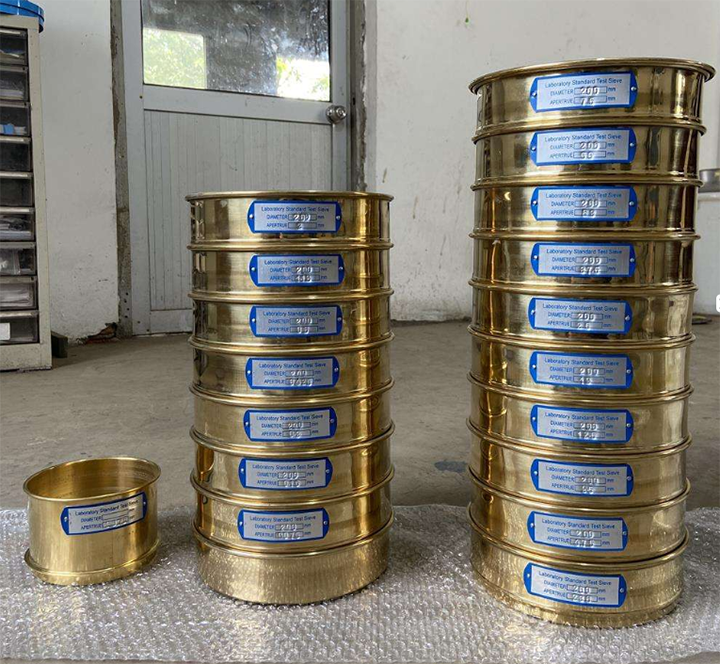
Agricultural soil testing sieves are crucial in soil analysis. Their accuracy, cost-effectiveness, ease of use, and high reliability have made them an indispensable tool in soil science and agricultural production. Their advantages are primarily reflected in the following aspects:
Accurate information on soil physical properties: Soil sieving precisely separates soil samples into particles of varying sizes, such as sand, silt, and clay. This particle size analysis is fundamental for evaluating soil texture (e.g., sandy loam, clay loam), directly impacting soil aeration, water permeability, water-holding capacity, and erosion resistance.
Low-cost and easy to use: Compared to complex laser diffraction or sedimentation analyzers, soil sieving is more economical. It does not require expensive equipment or extensive technical training, is simple and intuitive to operate, and provides rapid results, making it ideal for preliminary field or laboratory assessments.
Reliable and standardized results: High-quality soil sieves adhere to international standards, ensuring precise sieve size. This ensures highly comparable and reliable test results across laboratories and over time, providing stable data support for scientific research and agricultural production.
Widely applicable: In addition to basic particle size analysis, soil sieving is often used to separate impurities (such as roots and rocks) from soil in preparation for subsequent chemical analysis. It is also an effective tool for evaluating soil improvement effectiveness and can help us understand soil aggregate formation.
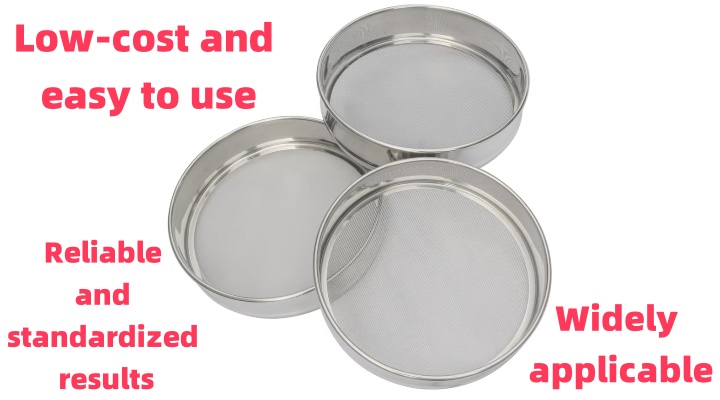
Agricultural soil testing sieves play a central role in soil analysis. Their primary purpose is to analyze soil particle size, which determines the percentage of different-sized particles (such as sand, silt, and clay) in the soil. Specifically, soil testing sieves are used to:
Assess soil physical properties: The particle size distribution of soil directly affects its physical properties. Sieving provides a deeper understanding of soil texture, determining whether it is sandy, clayey, loamy, or another type. This directly impacts soil workability, drainage, and water retention. Regarding permeability and aeration, soils with a high sand content have good permeability and aeration, while soils with a high clay content have the opposite effect. This is crucial for crop root respiration and water management. Regarding water holding capacity, clay and silt particles have small surface areas and can absorb more water and nutrients. Sieving can predict the soil's water supply capacity.
Guiding agricultural production management: Based on soil physical data obtained through Agricultural soil testing sieve sieving, farmers and agricultural experts can make more informed decisions. For irrigation planning, understanding soil permeability allows adjustments to irrigation frequency and volume to avoid water waste or root oxygen deprivation. Fertilization strategies can optimize fertilizer types and rates for different soil textures to improve fertilizer utilization efficiency. For example, sandy soils have poor fertilizer retention and require frequent, small applications. Tillage methods can be tailored to different soil textures, using appropriate tillage machinery and depth to improve soil structure and prevent compaction.
Soil improvement and engineering evaluation: After adding organic fertilizers or amendments to the soil, Agricultural soil testing sieve screening can assess soil aggregate formation and determine the effectiveness of the improvement measures. In construction and engineering applications, soil screening is a crucial step in assessing foundation stability and drainage performance in agricultural facility construction (such as greenhouses and drainage systems).
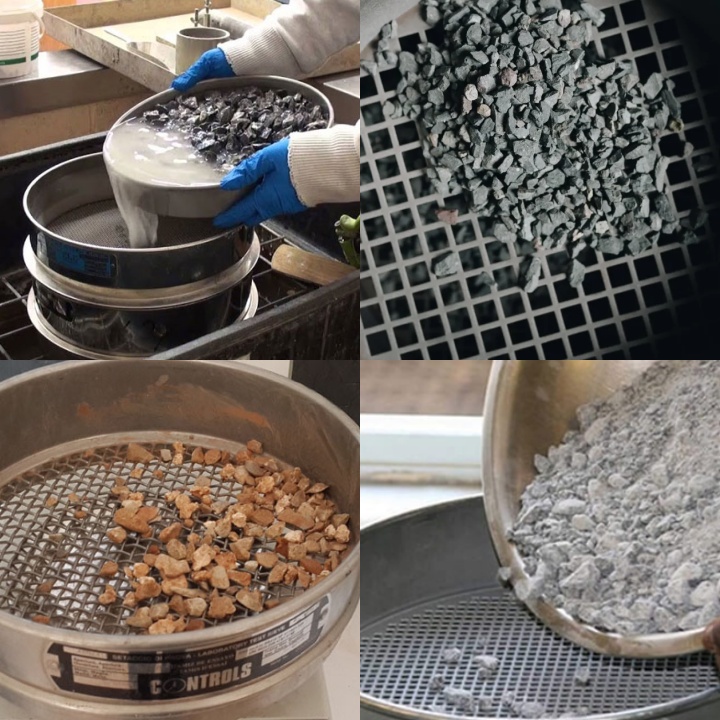
Agricultural soil testing sieves, a key tool for bridging the field and laboratory, offer the advantages of simplicity and universal operation. Made of corrosion-resistant metal, the sieves' mesh accuracy meets international soil classification standards, enabling both aggregate separation in clayey soils and rapid classification of sandy soils. The layered sieve design allows for simultaneous testing of multiple particle sizes, reducing repetitive steps. This screening method based on physical properties, with its stable and reliable technical path, has become an indispensable basic means in current agricultural soil analysis.
ASTM standard soil analysis sieves with pan and cover
ASTM standard soil analysis sieve is a special test sieve manufactured according to the American Society for Testing and Materials (ASTM) E11 standard...
0.5mm stainless steel soil sieve for lab testing
0.5mm stainless steel soil sieve for lab testing is a screening tool commonly used in soil particle analysis...
Construction soil sieves are used to size-classify bulk granular materials...
Environmental soil sieves are a key tool whose core function is to physically separate soil samples based on particle size...
Oct 16, 2025
Agricultural soil testing sieve
Agricultural soil testing sieve uses a 2mm sieve to separate the fine particles in the soil in order ...
Oct 15, 2025
Stainless steel soil sieve is called soil sieving instrument or soil analysis sieve, and the mesh siz...
Oct 14, 2025
Standard Test Sieve is a commonly used particle analysis tool in laboratories and industrial sites. I...
Oct 10, 2025
material test sieve with sample
Material test sieve with sample By testing samples such as quartz, fertilizers, seeds, etc., the part...
![]()
Then we look forward to hearing from you
Contact Us
Industrials
Yanjin county forest park gate to the west 1000 meters north road sitemap
